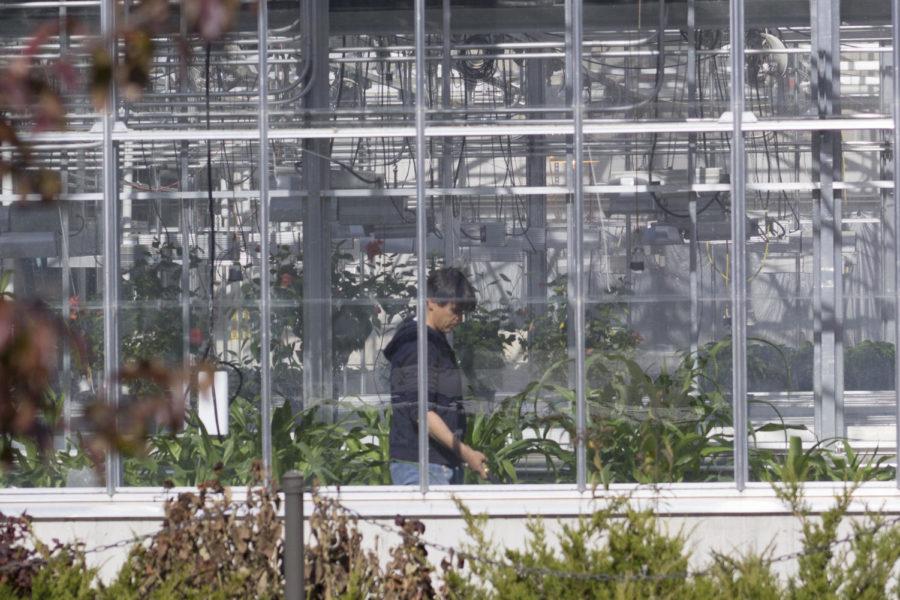Westberg: Gardening skills benefit us all
Kennedy DeRaedt/Iowa State Daily
Scientist I, Ursula Frei waters corn plants Oct. 29 in the greenhouses near Horticulture Hall. Frei is a faculty member of the Agronomy department. The greenhouses support activities related to certain courses, research and departmental use.
February 27, 2019
Carbon emissions and air pollution are at an all-time high from the population, gross domestic product and vehicle miles traveled as reported by the United States Environmental Protection Agency. It is a well-known fact that plants can help purify our air and our water. But how are we supposed to do that with a little space left in the world after building so many factories, apartments and many other things? Some have come to the solution of rooftop greenhouses.
Some may view rooftop greenhouses as impractical or too much work, but the fact of the matter is that they are soon going to become an essential part of how we produce and grow food. Rooftop greenhouses would be very beneficial in larger cities such as New York, Los Angeles or Denver. While many rooftops may have some form of a greenhouse, imagine thousands of skyscrapers being filled with green on top. It would help the air quality of these larger cities where many factories are located as well as clear out some of the smog that may already be in the air.
Efforts have already been made by residents of New York City, with rooftop greenhouses covering over 40 thousand total acres of land as reported by Michael Treglia, an urban spatial planner with the Nature Conservancy. Rooftop greenhouses have been seen in many different restaurants, as farm to table is becoming more and more popular in the food industry. These rooftop greenhouses have started to be implemented in more and more places, even at our own university. On top of Bessey Hall, there are multiple greenhouses alive and well, even in this polar vortex, we seem to be living in outside.
Others, such as Stephen Ritz, have made the effort to make a change within schools. Ritz is a teacher who started a class teaching kids how to manage their eating, how to grow crops and the business behind those crops. Ritz has collaborated with multiple businesses to get himself and his students to where they are today, which is a globally recognized group of student farmers. The work is life-changing to them, and it carries on to the surrounding community.
Many people, especially those who live in large cities, would agree that the world doesn’t have enough green but technology is better, and Ritz would have to disagree. Stephen Ritz’s presentation “A Teacher Growing Green in the South Bronx” goes over what teachers and parents of the community can show students on how to live healthier by growing plants.
Ritz turned the idea of the concrete jungle to a never-ending greenhouse with walls of green, constructing walls of plants and building them into businesses and schools in Bronx County. The idea behind these walls is that he is trying to make Bronx County something people should not be afraid of. Ritz’s overall goal was to share the “glory and bounty that is Bronx County.” In Bronx County, people have a 1 in 102 chance of being a victim of a violent crime, and students have a higher chance of being victimized.
Bronx County, New York may seem very far away, but it does not mean that the same underlying issues do not exist here in Iowa. Living in Iowa doesn’t mean that we all know how to grow and handle crops or plants, but by implementing gardening into public school curriculums, students will have a better understanding of exactly how plants benefit our wellbeing, as well as their own.







